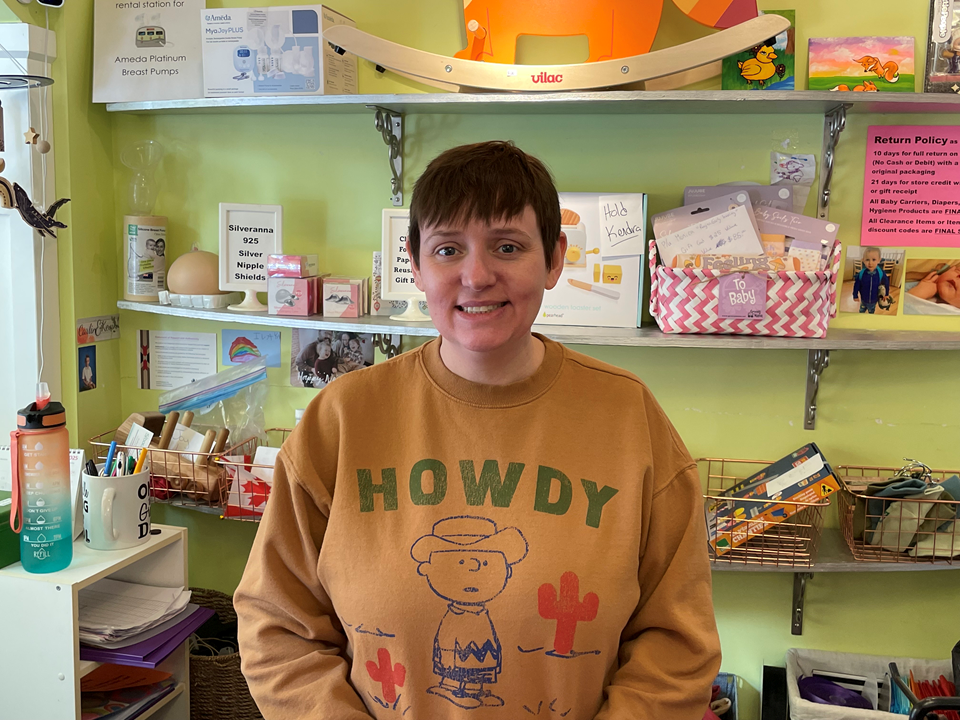REGINA - The two-month GST/HST holiday tax break ended over the weekend, with many small businesses saying it had no effect.
A survey done by the Canadian Federation of Independent Business (CFIB) said only 5 per cent of small businesses saw stronger sales than last year. Additionally, only 4 per cent of businesses in retail saw an increase in sales.
Dan Kelly, CFIB president, said, "by all accounts, the government’s GST holiday was a flop for small businesses."
One business owner who agreed with that statement is Cara Zimmerman, the owner of Groovy Mama based in Regina.
Zimmerman was asked if the tax break affected her revenue in any way, to which she replied, "absolutely not."
From what she saw, Zimmerman said, "I would say zero customers came in because of [the tax break]. The majority of people had no idea it was even going on."
When Zimmerman did mention the tax-break to a customer, "it would just be a casual thought in the back of their mind," she said.
She understood why, considering Groovy Mama sells clothing items for around $45, which won’t save a consumer much from a 5 per cent GST cut in Sask. However, if a store like Hello Baby is selling car seats for around $800, with a 5 per cent tax cut, Zimmerman said, then there will be an incentive for a person to take advantage of said cut.
In general, Sask, didn’t benefit as much from the tax break when comparing other provinces. For example, Ontario's GST/HST is 13 per cent. So, if a consumer purchased baby clothing items in Ontario for $500, they would have saved $65 from not being taxed.
Meanwhile, the same amount for baby clothing in Saskatchewan would be $530. Since Sask. only has a 5 per cent GST, consumers would get a $25 GST break. However, the province also has a 6 per cent PST, so an additional $30 would be added to the $500, which adds up to $530.
Zimmerman feels there’s alot of confusion regarding taxes, "especially with online shopping now and shipping across provinces." She added, "you only pay PST in the province that you live in. So it creates [a] situation where if you order from a store in another province, you might not get charged tax now. So it's almost cheaper to order from a different province than your own."
CFIB’s study also mentioned small firms faced challenges from the tax break, including reprogramming point-of-sale (POS) systems.
Zimmerman herself has two different systems, which took her time to figure out how to implement the tax break.
"[So, the] POS in store took me about a day to read through my manual to figure out how to program a second tax button on my POS. [For] my website, it definitely took multiple hours of me going back trying to figure it out, doing research on the web [and] going back trying to implement it. So I would say like I spent about 10 hours altogether trying to figure it out."
She also pointed out stores had to finish their sales and collect their GST taxes the day before the tax break was implemented and then adjust to not collecting said taxes the following day. So, implementing those changes in one night was "time-consuming," said Zimmerman.
Zimmerman felt that the federal government should have had more discussions with small businesses about the tax break. She also believes it would have made more sense to begin the GST cuts around Oct. or Nov., when a lot of people do early Christmas shopping.
After the holidays, Jan. and Feb. tend to be the slowest months for retail stores, she said.
Rather than doing the GST break, Zimmerman said, "the government should have just given [GST] checks out [to low-income families]."
With those checks, Zimmerman noted, "those families could have went out and spent that $200 at local stores buying their Christmas supplies, buying their toys for their children. And I think that would have probably affected local business[es] and the economy much better than offering this ridiculous 5 per cent discount to people who didn't need it."




